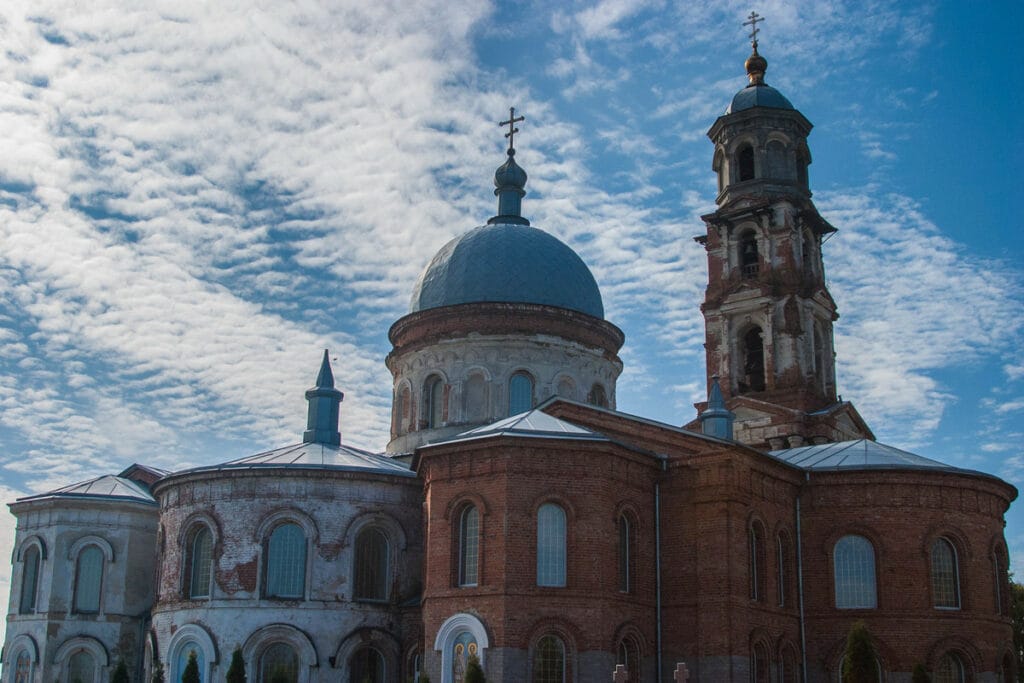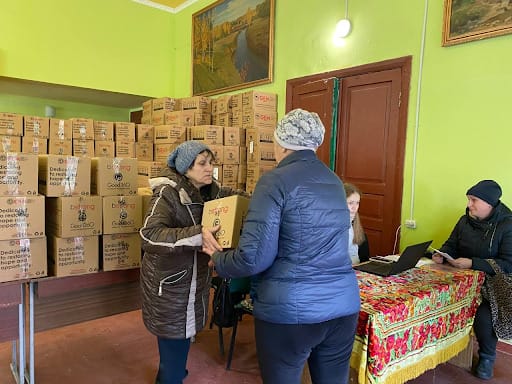This website uses cookies so that we can provide you with the best user experience possible. Cookie information is stored in your browser and performs functions such as recognising you when you return to our website and helping our team to understand which sections of the website you find most interesting and useful.
Myropillia Territorial Community

The Myropillia rural territorial community is located in the Sumy district of the Sumy region.
The total area: 298.6 km²
Population: 4,525 (before the full-scale russian invasion of Ukraine)
The Myropillia community includes 10 villages, with the administrative center in the village of Myropillia
History
On the territory of modern Myropillia, the first settlers settled in the 15th-16th century in a dormant forest along the Myrna Pylka River, which, according to legend, gave the name to the future town. This quiet forest river later became shallow and then dried up completely, leaving some traces in the suburban area. The settlement was founded around 1650. It is interesting that Myropillia is older than Sumy.
In 1670, Myropillia was granted the status of a town, and about 20,000 residents already lived there by the beginning of the 20th century. The town had a large shoe factory that served the needs of the army, the largest fair in the region was held here three times a year, a telephone had already been installed, and schools, colleges, and two libraries operated. On the eve of the revolution, there were six churches in Myropillia. The town was developing rapidly.

It fell into disrepair during the Soviet period. Collectivization, the Holodomor and the Second World War put an end to the existence of Myropillia as a town.
There are many historical monuments, natural and tourist attractions in the Myropillia community.
Unique St. Nicholas Church has the highest 5-tier bell tower in Sumy Region. The temple was built in 1885 and was part of the St. Nicholas Monastery. Earlier, there was an old wooden church in its site. Today, the church is active and is intensively being revived.

Next to the church is the building of the parish school of the 20th century. Now it accommodates a post office.


Economy and Welfare
The community is located in the forest-steppe and agricultural zone. As far as minerals are concerned, the community is rich in reserves of clay and sand.
The main enterprises that play an important role in filling the local budget are engaged in agriculture, namely: commercial agricultural production, production of bakery products, growing of grain and agricultural crops. There are also several agricultural enterprises engaged in breeding and keeping livestock.
2 rivers with a total length of more than 60 km flow through the community, including one of the region’s largest rivers – the Psel which flows into the Dnipro.

There are 7 educational institutions in the community: 2 preschools, the Myropillia Lyceum with two branches, and a center for children’s and youth creativity (at the moment, all institutions work remotely). There are also three cultural centers. Residents take an active part in cultural life; organize theatrical performances and village festivals.


The population has unimpeded access to medicine, since there is a rural medical clinic and an emergency medical aid point in the community.
There are 2 stadiums in the community where football and volleyball competitions are held regularly.


Community and War
The Myropillia territorial community is located on the border with russia, so the residents of the community felt the military action from the first minutes of the offensive. Fortunately, the community was not occupied by the enemy, but russia regularly hits the community with artillery and aerial bombardments. Most of the residents of the community have been engaged in the Defense Forces of Ukraine since the first days of the full-scale russian invasion of Ukraine


In addition, the community suffered great human losses in this war. In 2019, Senior Lieutenant Vladyslav Shchelynskyi, born in 1997, was killed during the defense of the hero city of Mariupol against the russian invaders.

People of the Community
Olena Sharkova is the acting head of the Myropillia Territorial Community. She has held the position since March 2023.

Since her appointment, Ms. Sharkova comprehensively supports the local population which regularly suffers from russian shelling and engages international organizations in cooperation, including organizations that provide humanitarian aid and contribute to the restoration of damaged/destroyed housing and social facilities.
In October 2023, the head of the community took part in the U-LEAD with Europe educational program, Steps for specialists. Procedural issues of recovery in territorial communities. The close cooperation resulted in the signing of a Memorandum of Cooperation and the receipt of a grant of EUR 75,000 for the restoration of an education institution damaged by the russian army’s shelling.

Development Strategy
The community has a Development Strategy until 2027.
There are 2 key priorities for community development. The first one is the development and reconstruction of the infrastructure. The second one is the development of green tourism.
The community has everything necessary to achieve this goal: protected areas and natural landscapes, highly productive plots of land which are potentially attractive for investors, forests and natural water resources.

The strategy also aims to promote the cohesion of government, business and the public to create a public-private partnership.
Since the territory of the community is in the war zone, the implementation of the strategy is temporarily suspended.
List of Sources
- andy-travel.com.ua/myropillya
- The materials were provided by the leadership of the Myropillia community
